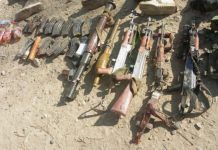DM Monitoring
WASHINGTON: Nine months after the US government declared a state of emergency to fight the coronavirus pandemic, daily deaths and new infections are breaking records, hospital capacity is more stretched than ever, and debate over the economic response has devolved into a battle over who deserves help and who doesn’t.
How did it get to this point? Once-in-a-century public crises might seem a natural rallying point for a nation, but the current pandemic hit a tri-feta: a politically polarized society, the uneven spread of the virus, and an economic impact that was disparately felt and quick to fade in some parts of the country even as it kept others fast in its grip.
Today’s rampant spread of the virus is bound with those facts: Local and state decisions to let the economy reopen as much as it did, as soon as it did, with public health rules spotty and unevenly enforced, set the stage for it to rotate through the country and eventually to spread unchecked.
While that spurred more job creation early on, the country is now facing the worst of both worlds.
New COVID-19 cases are mounting at a rate of a million a week, and deaths have reached new peaks approaching 3,000 daily. Meanwhile, the economic recovery seems to be hitting stall speed. U.S. payrolls grew by only 245,000 jobs in November, scant progress given that net job losses since February still total around 10 million.
New data released in early December on state and metro level employment and wages by industry show just how unevenly the economic pain of those first months was spread.
Indeed, while workers in New York City, one of the early epicenters of the U.S. outbreak, struggled with economic conditions reminiscent of the Great Depression last spring, workers in Montana, on the whole, earned about as much in the three months from April to June as they did in the prior three months.
For workers in six western states, in fact, the second quarter of 2020 looked about the same as the second quarter of 2019 in terms of total wages collected, while in Nevada, Hawaii and Michigan wages were down more than 10% from a year earlier.
The jobs crash was painful everywhere, particularly in the industries where people would be most vulnerable to a communicable disease – the close-contact services like restaurants, grooming parlors and gyms. Even in places where the initial crash was less intense, more than 8% of jobs were lost from February to April. At its worst, in the U.S. Northeast and Hawaii, more than 20% of jobs disappeared.




